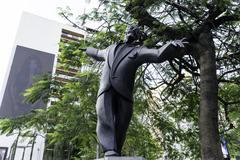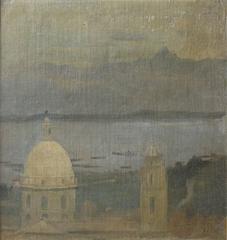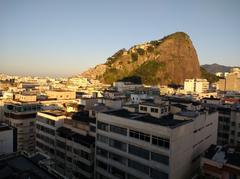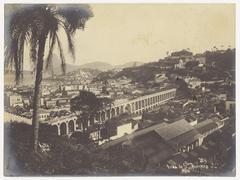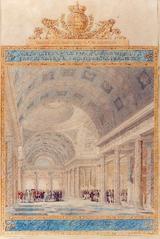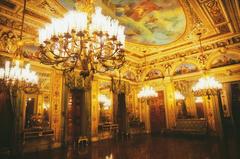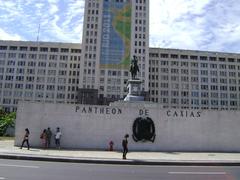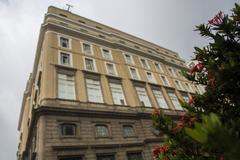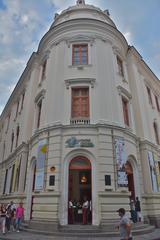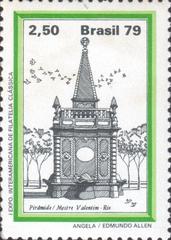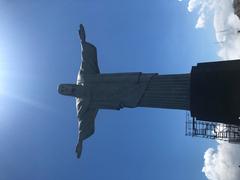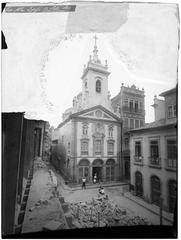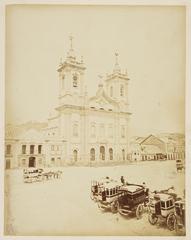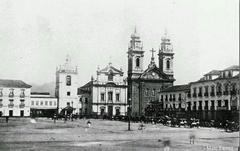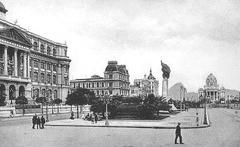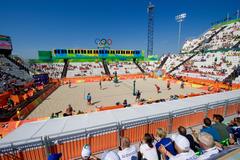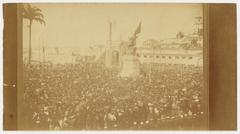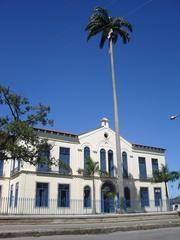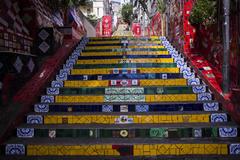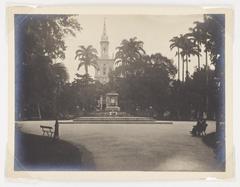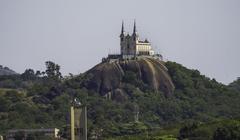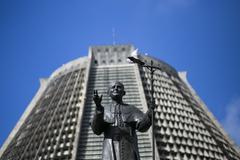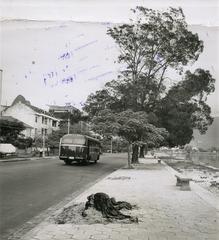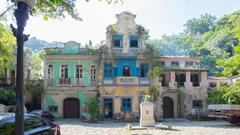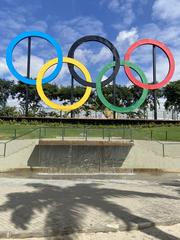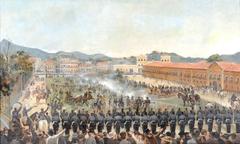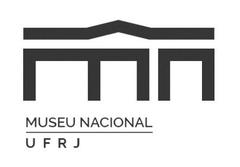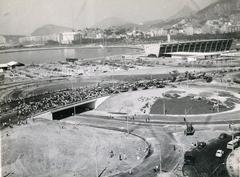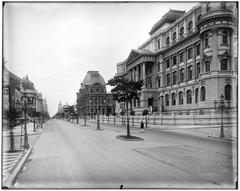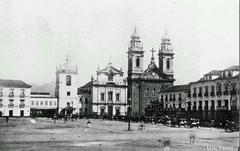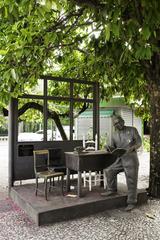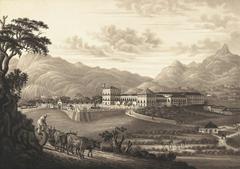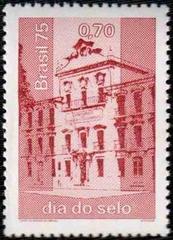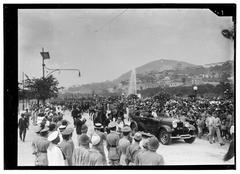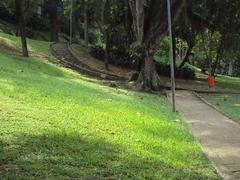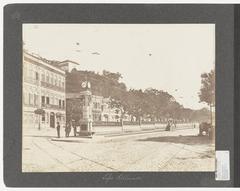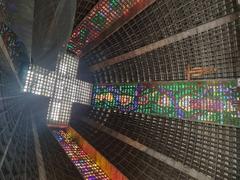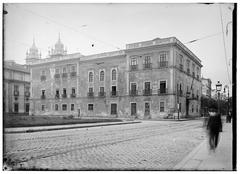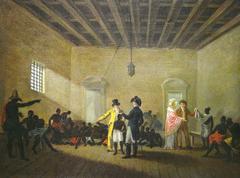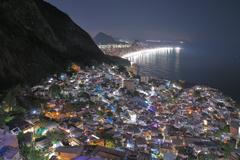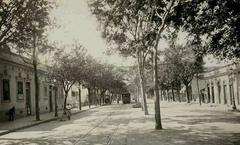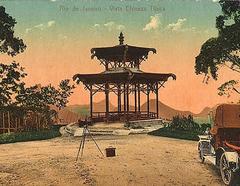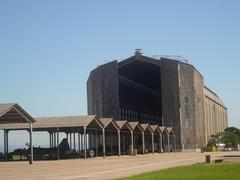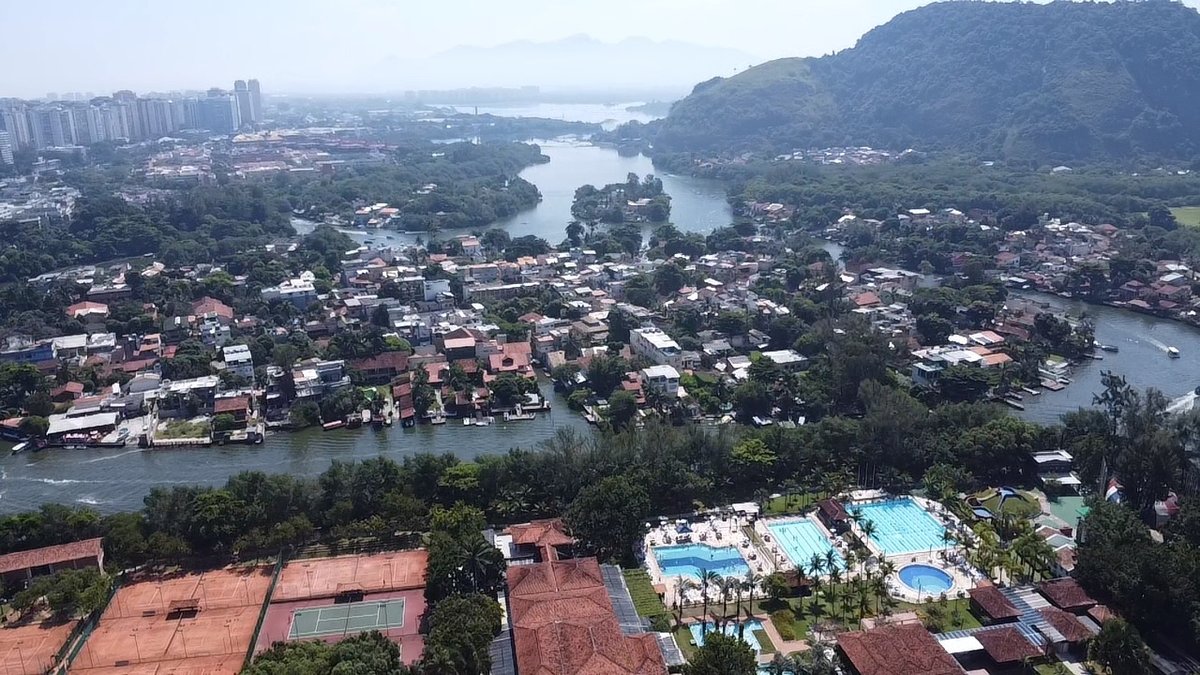
Comprehensive Guide to Visiting Alameda Dalton Barreto, Rio de Janeiro, Brazil
Date: 31/07/2024
Introduction
Alameda Dalton Barreto, nestled within Rio de Janeiro’s affluent Barra da Tijuca neighborhood, represents a fascinating blend of history, culture, and modern urban development. This guide aims to provide a comprehensive overview of Alameda Dalton Barreto, tracing its historical roots, examining its urban and architectural significance, and offering practical visitor information. The area’s transformation began in earnest during the mid-20th century, spearheaded by renowned Brazilian urban planner Lúcio Costa, who envisioned a modernist haven of wide avenues, green spaces, and functional architecture. Today, Alameda Dalton Barreto is not only a testament to Costa’s vision but also a vibrant hub of economic activity and cultural exchange. With its strategic location near Rio de Janeiro’s stunning beaches and key attractions, this area offers a unique blend of natural beauty and contemporary amenities, making it a must-visit for both locals and tourists alike.
Table of Contents
- Introduction
- Historical Background
- Urban Development
- Geographic Significance
- Cultural Importance
- Architectural Highlights
- Economic Impact
- Social Dynamics
- Environmental Considerations
- Transportation and Accessibility
- Future Prospects
- Nearby Attractions
- Visitor Information
- Visitor Tips
- FAQ
- Conclusion
Historical Background
Alameda Dalton Barreto’s history traces back to the early 16th century when Portuguese explorers first arrived in Brazil. Barra da Tijuca, the larger neighborhood that encompasses Alameda Dalton Barreto, remained largely undeveloped until the mid-20th century. During the mid-1900s, a wave of urbanization transformed Barra da Tijuca into one of Rio’s most affluent and modern districts. This development was part of a broader urban planning initiative aimed at expanding Rio de Janeiro’s residential and commercial areas.
Urban Development
The transformation of Barra da Tijuca, including Alameda Dalton Barreto, owes much to Brazilian urban planner Lúcio Costa, renowned for designing Brasília. Costa envisioned wide avenues, large green spaces, and modernist architecture for Barra da Tijuca. This vision has made Barra da Tijuca a desirable location for both residents and businesses, contributing to its rapid growth and development.
Geographic Significance
Strategically located in Barra da Tijuca, Alameda Dalton Barreto boasts easy access to extensive beaches, modern infrastructure, and a vibrant lifestyle. The geographic coordinates of Alameda Dalton Barreto are latitude -22.8218892 and longitude -43.3324119. Its proximity to several key attractions in Rio de Janeiro makes it an ideal spot for both locals and tourists.
Cultural Importance
Barra da Tijuca, and by extension Alameda Dalton Barreto, is a melting pot of cultures. Home to a diverse population, including expatriates and locals, it offers a rich cultural tapestry. The area is known for its lively festivals, culinary diversity, and vibrant nightlife. The cultural significance of Alameda Dalton Barreto is further enhanced by its proximity to various cultural landmarks and institutions in Rio de Janeiro.
Architectural Highlights
The architecture in and around Alameda Dalton Barreto reflects modernist influences. The area features a mix of residential buildings, commercial establishments, and public spaces designed to promote a high quality of life. Modernist architecture, characterized by clean lines, functional design, and the integration of natural elements, is evident in the buildings and public spaces along Alameda Dalton Barreto.
Economic Impact
The development of Alameda Dalton Barreto has had a significant economic impact on Barra da Tijuca and Rio de Janeiro. The area has attracted numerous businesses, including retail stores, restaurants, and service providers, contributing to the local economy. The presence of high-end residential properties has also boosted real estate values, making Barra da Tijuca one of the most sought-after neighborhoods in Rio de Janeiro.
Social Dynamics
The social dynamics of Alameda Dalton Barreto are shaped by its diverse population and modern amenities. The area is known for its high standard of living, with residents enjoying access to top-notch healthcare, education, and recreational facilities. Community events and activities further enrich the social fabric of the neighborhood, promoting social interaction and cohesion.
Environmental Considerations
Sustainability and environmental conservation are key considerations in the development of Alameda Dalton Barreto. The area features several green spaces and parks, providing residents with opportunities for outdoor activities and relaxation. Efforts to preserve the natural beauty of the region, including nearby beaches and lagoons, are integral to maintaining the area’s ecological balance.
Transportation and Accessibility
Alameda Dalton Barreto is well-connected to the rest of Rio de Janeiro through an extensive network of roads and public transportation. The area is easily accessible by car, bus, and metro, making it convenient for residents and visitors to travel to and from other parts of the city. Reliable transportation options enhance the appeal of Alameda Dalton Barreto as a residential and commercial hub.
Future Prospects
The future prospects for Alameda Dalton Barreto are promising, with ongoing development projects aimed at further enhancing the area’s infrastructure and amenities. Plans for new residential and commercial developments, as well as improvements to public spaces and transportation networks, are expected to attract more residents and businesses. Continued growth and development will solidify Alameda Dalton Barreto’s status as one of Rio de Janeiro’s premier neighborhoods.
Nearby Attractions
Alameda Dalton Barreto is located near several notable attractions in Rio de Janeiro, making it an ideal base for exploring the city. Some of the nearby attractions include:
- Christ the Redeemer: One of the most iconic landmarks in Rio de Janeiro, the Christ the Redeemer statue offers breathtaking views of the city and is a must-visit for tourists (The Planet D).
- Sugarloaf Mountain: Another famous attraction, Sugarloaf Mountain provides panoramic views of Rio de Janeiro and is accessible via a scenic cable car ride (The Planet D).
- Copacabana Beach: Known for its vibrant atmosphere and beautiful coastline, Copacabana Beach is a popular destination for both locals and tourists (The Planet D).
- Museum of Tomorrow: Located in downtown Rio, this futuristic museum explores themes of sustainability and technological innovation (The Planet D).
Visitor Information
- Visiting Hours: Alameda Dalton Barreto is accessible to the public 24 hours a day. However, individual businesses and attractions may have specific operating hours.
- Tickets: There are no entry fees for Alameda Dalton Barreto itself, but nearby attractions may have admission charges.
- Guided Tours: Guided tours are available for those interested in exploring the history and cultural significance of Alameda Dalton Barreto. Check with local tour operators for schedules and pricing.
- Photographic Spots: The area offers numerous scenic spots ideal for photography, especially along the beaches and green spaces.
Visitor Tips
For those planning to visit Alameda Dalton Barreto, here are some useful tips to ensure a memorable experience:
- Accommodation: There are several accommodation options in Barra da Tijuca, ranging from luxury hotels to budget-friendly hostels. Booking in advance is advisable, especially during peak tourist seasons.
- Pousada Barra da Tijuca: This inn offers a garden, private parking, a shared lounge, and barbecue facilities. It is situated 2.3 km from Barra da Tijuca Beach. The property provides free WiFi and some rooms have a patio with a mountain view (Booking.com).
- Pousada Recanto Barra da Tijuca: Located at the same address, this inn also offers free bikes, private parking, and a garden. It is 15 km from the Rio de Janeiro Botanical Gardens and 16 km from Rodrigo de Freitas Lake (Booking.com).
- Transportation: Utilize public transportation options such as buses and the metro to navigate the city. Renting a car is also a convenient option for exploring the area at your own pace.
- Safety: While Barra da Tijuca is generally considered safe, it is always advisable to take standard precautions, such as avoiding poorly lit areas at night and keeping an eye on personal belongings.
- Local Cuisine: Don’t miss the opportunity to sample local Brazilian cuisine, including dishes like feijoada, pão de queijo, and brigadeiros. There are numerous restaurants and street food vendors in the area offering a variety of culinary delights.
- Weather: Rio de Janeiro has a tropical climate, with warm temperatures year-round. Be sure to pack appropriate clothing, sunscreen, and stay hydrated, especially during the summer months.
FAQ
Q: What are the visiting hours for Alameda Dalton Barreto?
A: Alameda Dalton Barreto is accessible 24/7, but individual businesses and attractions may have specific operating hours.
Q: Is there an entry fee for Alameda Dalton Barreto?
A: No, there are no entry fees for Alameda Dalton Barreto itself. However, nearby attractions may have admission charges.
Q: Are guided tours available for Alameda Dalton Barreto?
A: Yes, guided tours are available. Check with local tour operators for schedules and pricing.
Q: What are some nearby attractions to Alameda Dalton Barreto?
A: Nearby attractions include Christ the Redeemer, Sugarloaf Mountain, Copacabana Beach, and the Museum of Tomorrow.
Conclusion
By understanding the history and significance of Alameda Dalton Barreto, visitors can gain a deeper appreciation for this vibrant and dynamic part of Rio de Janeiro. Whether you’re interested in exploring cultural landmarks, enjoying the natural beauty of the area, or simply soaking in the local atmosphere, Alameda Dalton Barreto offers a unique and enriching experience for all.
References
- Best Things to Do in Rio de Janeiro, 2023, The Planet D source
- Best Time to Visit Rio de Janeiro, 2023, Travellers Worldwide source
- Booking.com, 2023 Pousada Barra da Tijuca
- Booking.com, 2023 Pousada Recanto Barra da Tijuca
- Rio de Janeiro Travel Tips, 2023, The Unknown Enthusiast source
- Best Time to Visit Rio de Janeiro, 2023, Lonely Planet source

